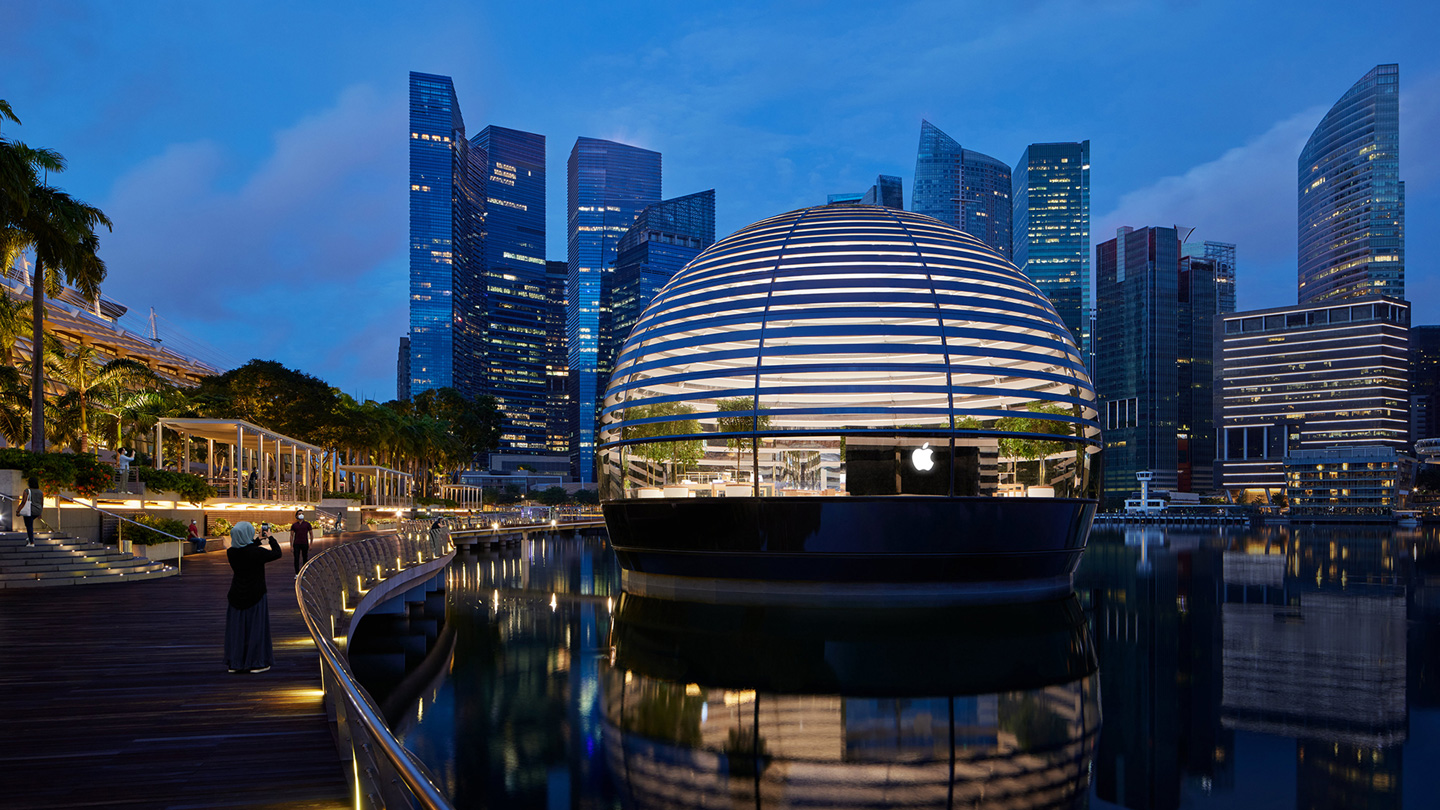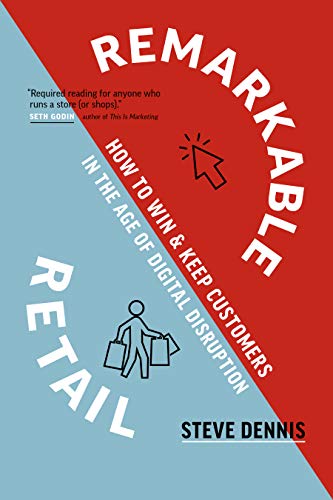
Background photo created by jcomp – www.freepik.com
Retail as we know it is dying. And it ain’t just Covid-19’s or e-commerce’s fault.
Just look at the number of retailers around the world (and right here in Singapore) that are rolling down the shutters.
Robinsons, Top Shop, MPH, Esprit, Toys R Us, Zara, H&M—these bellwether icons of brick-and-mortar retail are either filing for bankruptcy or closing stores by the thousands.
How can retail businesses thrive in such an environment? And what strategies can your retail brand apply to make shopping great again?
Thanks to the book Remarkable Retail by Steve Dennis, we now have a compass to guide the way forward for retailers of all stripes.
In this article, I will summarize some of the lessons gleaned from the book—hopefully these can help you to not just survive but succeed in an age of major disruption.
The Nine Major Shifts in Retail
Buffeted by multiple seismic forces in recent years—some more earth-shattering than others—retail has seen many changes as technology, demography, and consumer tastes shifts over the years.
Here are some of the shifts documented by Dennis:
- End of Scarcity—Information, access, choice, convenience, connection, and low cost products are now ubiquitous.
- Malls are Changing—Disruptions like big-box category killers, discount mass merchandisers, off-price and dollar stores are changing malls
- Department Stores are Dying—All-in-one department stores are going the way of the Do Do. In their place are more entertainment mixes or non-traditional retail tenants
- Collapse of Mediocre Middle—Middle-of-the-road retailers are making way for price-based and premier retail concepts
- Growth of Branded Stores—Top line brand manufacturers are opening their own flagship stores and offering omni-channel retailing
- The Amazon Effect—The impact of the world’s largest online retailer led many physical brands to open their own online equivalents.
- DNVB (Digitally Native Vertical Brands) Go Physical—From Amazon to Alibaba, many online plays are branching out into opening physical retail outlets, offering omni-channel experiences to customers.
- The Customer is the Channel—Retail brands which wrap themselves around their customer’s lives win
- Closing of Stores Don’t Help The Rest—Mass store closings have not helped any retailers. Those who stick to their locations can gain an advantage of having greater brand visibility
In summary, the main gong sounding the death knell for retailers isn’t ecommerce, but boring retail.
These are companies that prefer to stick their heads in the sand, ignoring what’s happening around them.
“The biggest risk is not taking any risk. In a world that is changing really quickly, the only strategy that is guaranteed to fail is not taking risks.”—Mark Zuckerberg
The Eight Essentials of Remarkable Retail
So how can you ride the wave and be a Purple Cow retailer? The goal is not to sell your product but to sell the story—or even better, make it part of your customer’s story.
Dennis proposes 8 key strategies to becoming a remarkable retailer:
#1 Digitally Enabled
Go beyond e-commerce to offer virtual experiences that complement your physical store locations. Aim to provide anytime, anywhere, anyway retail.
Grow your digital influence by investing in building your social media brand.
Use technology as a tool and an enabler to provide seamless customer service across multiple channels.
An example of a brand that has digitally augmented their customer’s shopping journey is Sephora. Their mobile app provides features like how-to videos, new product launches, the ability to see staff favourites, as well as to scan a QR codes in the store for customers to get detailed product information.
#2 Human-Centered
Focus on customer-centricity by deep diving into your customer’s path to purchase.
Train your employees to have empathy for their customers. Use customer behavioural insights and data to inform your actions.
Design your store to be human-centered. And consider the needs of your various stakeholders—consumers, tribes, networks, employees, investors, collaborators, the broader community and the planet.
#3 Harmonized (aka Omnichannel)
Integrate and synchronise your customer’s experience across your entire funnel.
Your omnichannel strategies should look at “amplifying the wow” by eliminating boundaries and breaking the silos between online and offline shopping.
A good example here is Alibaba. Using advanced technology and personalisation techniques, Alibaba blends the best of the digital and physical worlds, with a customer’s mobile device at the centre of the shopping experience.
This is evident in the company’s Freshippo grocery stores, which act as mini-distribution centres that provide home delivery for customers who live within a certain radius.
Nearly all aspects of the shopping journey can be navigated through the Freshippo or Taobao app, including integration with the company’s payment platform Alipay. Check outs can be done through facial recognition technology.
#4 Mobile
To win the mobile game, retailers must take advantage of the proximity of mobile devices. Smart phones not only allow for online ordering—they also allow your customers to obtain product information, place and pick up orders, peruse product reviews, and experience the store.
A good way to do so is to create and curate “micro-moments that matter”—these are defined by Google’s framework as four types:
- I Want to Know: What your customer wishes to learn
- I Want to Go: What they can do in certain places, and where they can go
- I Want to Do: Educate and train your users on the things they want to do
- I Want to Buy: Provide locations and availability of products or services they can buy
#5 Personal
Use customer data and audience analytics to provide personalised experiences.
Be as granular as possible in articulating how your value proposition meets your customers in a unique, highly relevant, and remarkable way.
Treat your different customers differently. Understand that deep personalisation may mean curating products that is hyper-niche for your customer tribe.
You may also offer customised products—think Nike, Converse and Vans more than a Savile Row tailor—and seek to be ever more relevant to your customer.
#6 Connected
Being connected means being able to tell a remarkable story that ties in with your customer’s own narrative.
Social proof and validation can be achieved through what Gretta Rose van Riel called the “Six C’s of Connection”:
- Customer: They should be at the centre of everything you do (awareness, engagement, building trust, sharing, driving traffic, etc)
- Content: Be relevant and engaging to command attention and inspire action
- Community: Form a community or plug into an existing group, network or series of tribes. United them in engagement with your brand and its purpose, and tap their help to get the word out
- Conversation: Dialogue both from a brand-to-consumer and consumer-to-consumer level.
- Collaboration: Partner with your customer and other stakeholders to spread your story, amplify your messages, and co-create on products, services and content.
- Consistency: Have clarity and focus on your brand. Ensure consistency in brand messaging while leaving room for the bold and unexpected.
Finally, find a way to make your brand a “fourth place” in the hearts and minds of your customers.
#7 Memorable

Courtesy of Apple
To make your retail company truly memorable, you’ll need to focus on extraordinary customer experiences.
According to Dennis, there are six unique characteristics of being memorable:
- Unique: Don’t just be different; be distinctive. Adjectives here include “scarce,” “exclusive,” “incomparable,” “irreplaceable,” “original,” and “special.”
- Intensely Customer Relevant: Make sure that your uniqueness is valued by your customer
- Authentic: Be genuine, trusted, well-rooted and not gimmicky or forced. Be honest.
- Wow-worthy: Architect experiences that are “incredibly interesting, awe-inspiring, unexpectedly great, weird or peculiar in a really good way, and deeply entertaining while generating a surprising emotional response.”
- Ownable: Ensure that it is deeply associated with your brand, and not just riding on a trend.
- Scalable/Sustainable: Find a way to keep this going over the long haul.
Here, the book provides 11 way for retailers to be memorable:
- Big Concept Stores—Be massive and provide a complete range of services, like Starbucks with their new Roastery concept
- Micro-Concepts—At the opposite end of opening smaller stores, focus on services like personal shopping and tailoring. Locate near your customer.
- Hyper-niche Customers—Cater to specific niches like the “plus size” market or minority tastes
- Reimagined Places—Integrate dining, cooking, learning, shopping, and other experiences all under one roof
- Serve a Higher Calling—Brands like Patagonia, Warby Parker, and Toms have a cause which resonates with certain customers
- Retail as Advertising Service—Use your retail shops as advertising in high-traffic locations. A good example are Apple stores, including the recent one in Singapore at Marina Bay
- Stores as Theatre—Like the American Girl store, consider not just displaying products but creating entertaining, immersive retail environments where consumers may participate, co-create, and/or spectate.
- Hyper-Local—Make your store an extended part of your community, acting as a hub. Adapt your product mix to your community’s needs. Conduct events and classes that resonate with them.
- The Only Place—Carry assortments of goods that are exclusive to your location. Limit distribution.
- Subscription Based Shopping—Brands like Harry’s and Dollar Shave Club focus on supplying products to their customers on a regular delivery basis.
- Ultra-Frictionless—Use cashier-less checkouts or grab-and-go concepts that fit into your customer’s busy lifestyles with minimal fuss on their part.
#8 Radical
Last, but certainly not least, retailers should embrace innovation and creativity.
This needs to go beyond generating ideas to include vetting, prototyping, testing, commercialisation and scaling of new concepts.
Retail companies must also organise themselves for change. Build corporate cultures that embrace fear, fail fast (to learn better), and cherish experimentation.
Practice Wabi-sabi—the Japanese aesthetic concept that finds beauty in imperfection and the universe’s natural cycle of growth, decay, and death.
“Man cannot discover new oceans unless he has the courage to lose sight of the shore.”—Andre Gide
Conclusion
Well-written and a breeze to read, Remarkable Retail provides a good introduction to the fast-changing world of retail in the digital age.
I like how it considers the business of retail from a holistic sense, rather than just tout the shiny bright objects associated with digital technology.
I hope that this overview gives you a good introduction to the book. Do get a copy of the book if you wish to learn more.


Now you can digitize any business and thus make it a market leader. Some people say that if your business product is not related to digital technologies, then you can not implement digitalization in business. But I disagree with this, because it is much easier to technically and safely manage processes by tracking them in software than on paper